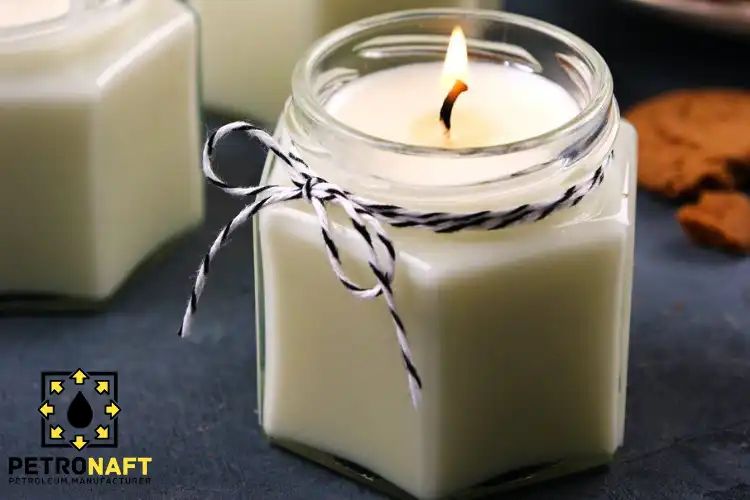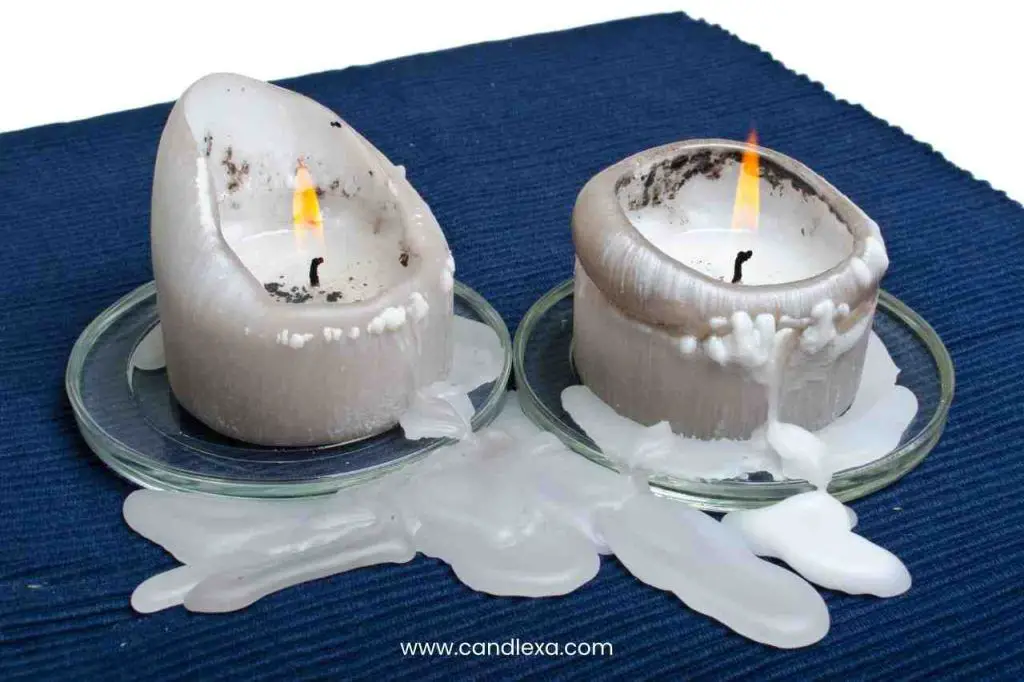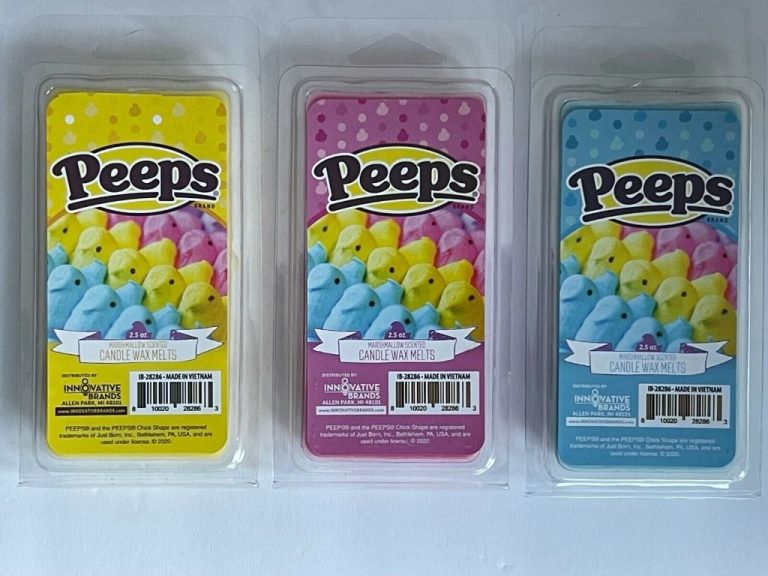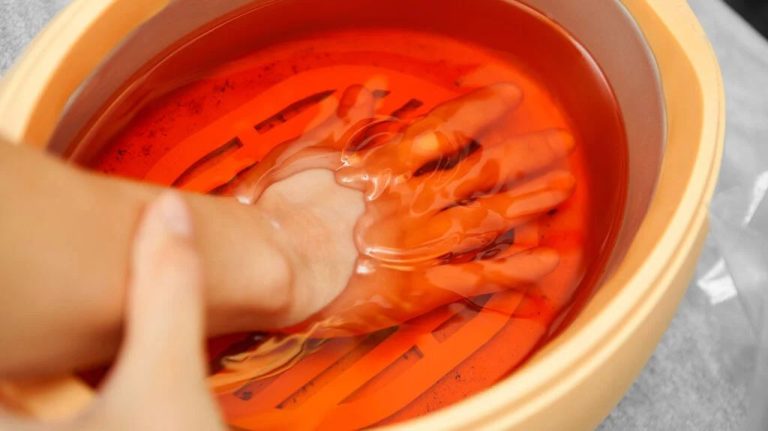Can Wax Go Stale?
What is wax?
Wax is a substance that is solid at room temperature but melts easily when heated. It is usually made up of a mixture of organic compounds like paraffin, beeswax, carnauba wax, or soy wax (Merriam-Webster, 2024). Waxes are typically immiscible with water but soluble in organic solvents. They have a high viscosity when melted. Some common household waxes include:
- Paraffin wax – a petroleum-based wax made from refining crude oil. It is commonly used in candles.
- Beeswax – a natural wax produced by honey bees. Beeswax is used in food, cosmetics, candles, furniture polish and more.
- Soy wax – a vegetable-based wax made from hydrogenated soybean oil. It is often used as an eco-friendly alternative to paraffin wax.

Waxes are defined by their melting point, hardness, and flexibility when solid. They can range from soft and sticky to brittle and hard. Waxes are useful for waterproofing, sealing, protecting, polishing, and dressing other materials (Cambridge Dictionary, 2022).
Does wax expire?
Wax itself does not technically expire or go bad. Wax is composed of hydrocarbons like paraffin or polyethylene that have very long shelf lives. The base wax materials are chemically stable and do not degrade or spoil over time.
However, wax products often contain fragrances, dyes, and other additives that can lose potency. Perfumes and scent compounds may fade or evaporate after prolonged storage, causing the wax to smell weaker. Dyes and pigments can also oxidize and change color. So while the wax itself remains stable, the additives can degrade and alter the wax’s properties.
According to this source, cannabis concentrates like wax and shatter do not technically expire but may lose some potency and flavor over an extended period. Proper storage is important to maximize shelf life. But the waxes and oils themselves remain stable over time.
Can wax go bad?
Wax itself does not really expire or go bad in the traditional sense. Wax is an inorganic material made from hydrocarbons, so it does not spoil or go rancid like organic materials.[1] However, wax can lose its potency and effectiveness over time.

The shelf life of a wax product depends on several factors. The fragrance oils, dyes, and other additives may degrade over time. Exposure to heat, light, oxygen, and moisture can also reduce the quality of wax. With proper storage, wax can last 1-2 years before losing its scent and performance. But very old wax may become dried out, discolored, or grainy.
So while wax does not technically expire, it can become stale after an extended period. Old or improperly stored wax may not burn or distribute scent as well. But often the effects are subtle and wax can still be used, especially if revived with fragrance oil. With care, most waxes have a relatively long shelf life.
[1] https://www.craftserver.com/topic/106927-can-wax-go-bad/
Signs of stale wax
There are several signs that wax may be going stale or has already gone bad:
Changes in texture – Fresh wax should be smooth and pliable. As wax ages it can become brittle, grainy or oily. According to CandleScience, waxes with a gritty or oily texture may indicate the fragrance has not properly bonded with the wax [1].
Changes in scent – The scent of wax tends to fade over time. If stored wax smells much weaker than when it was fresh, it is a sign the wax is past its prime. The scent may also change and take on unpleasant chemical odors.
Discoloration – Discoloration or darkening of the wax can be another indicator of age. Certain waxes like soy wax may naturally darken over time, but drastic color changes likely mean the wax has gone bad.
Becomes gritty – Wax with particles or grittiness has degraded and separated. This grittiness makes the wax unpleasant to use. Once wax reaches this point it is usually not salvageable.
Causes of wax going stale
Wax can go stale for a few key reasons related to improper storage and environmental factors. According to Yoda Badda Dabba, exposure to light, heat, and air are major causes of degradation in wax products like marijuana concentrates (https://yodabbadabba.com/dabbing-resources/can-marijuana-concentrates-go-bad/). Light and heat can cause the volatile organic compounds in wax to evaporate over time, changing the texture, scent, and potency. Oxygen in the air can also lead to oxidation and drying out of the wax.
Additionally, wax can absorb scents and flavors from its environment, especially if stored improperly. For example, wax stored near strongly scented products like air fresheners or cleaning supplies may take on those scents. Absorption of foreign scents indicates the wax seal has been compromised.
Moisture contamination is another factor that can make wax go bad. Exposure to humidity or water can cause certain types of wax, like wax candles, to sweat, mold, discolor, or lose their shape. Hard waxes are especially susceptible to moisture and can crack or become brittle if stored in humid conditions (https://nova-wax.com/blogs/news/top-reasons-why-your-hard-wax-is-cracking-and-breaking). Keeping wax stored in a stable, dry environment is key to preventing this type of deterioration.
Storing wax properly
Storing wax properly is key to preserving its quality and avoiding it going stale. Wax should be kept in a cool, dark place like a cupboard or drawer away from direct sunlight and other heat sources like appliances or vents. According to this video, you’ll want to store wax in airtight containers to protect from dust, pests, and moisture in the air. For items like candles, it’s also important to keep wicks dry so they don’t get saturated with oils and impact how the candle burns.

Store wax in its original packaging when possible or transfer to an airtight container like a jar, metal tin, or plastic storage bin. You want the container to be durable and secure but also easy to access when needed. Glass and metal containers are ideal for blocking light. Just ensure the lid or top seals tightly. For softer waxes like soy or beeswax, opt for a plastic container so the wax doesn’t stick to the sides. Keep containers in a cool, dark cupboard or drawer at a stable room temperature.
Avoid temperature fluctuations by not storing wax near appliances, vents, or windows with direct sun exposure. High heat can cause wax to melt, lose fragrance, and become misshapen. Check wax products periodically and discard if there are visible signs of sweating, mold, cracking, or crystals forming which indicate the wax has gone stale.
Reviving stale wax
If your wax has gone hard or lost its fragrance, there are some steps you can try to revive it:
Melt and strain the wax. Gently heat the wax until melted, then pour it through a fine strainer or cheesecloth to remove any debris or impurities. This helps purify the wax. Be sure not to overheat the wax, as this can damage it.
Add fragrance oil. Once the wax is melted and strained, you can add a few drops of fragrance oil to restore its scent. Start with 1-2 drops per ounce of wax. Popular fragrances for wax include floral, spice, citrus, and vanilla.
Combine with fresh wax. For the best results, mix some of the revived wax with new, fresh wax. This helps reinforce the wax structure. Aim for a 1:1 ratio of old wax to new wax.
Testing in small batches is recommended when reviving old wax. Properly stored wax can last up to 1-2 years, but will eventually lose efficacy. If the revival attempts are unsuccessful, it may be time to discard the wax.
Discarding old wax
When it’s finally time to get rid of old, stale wax, there are a few responsible ways to discard it properly. As long as the wax doesn’t contain any metal, you can simply throw it away in the regular trash (source). Of course, reusing or recycling wax is better for the environment if possible.
Consider donating old wax to secondhand stores, community centers, or schools where crafters and artists may be able to reuse it for projects (source). Wax can also be repurposed into fire starters by pouring melted wax into cardboard egg cartons or muffin tins with wicks.
With some creativity, that stale wax doesn’t have to go to waste after all. But when it doubt, it can simply be discarded in the trash.
Wax vs other materials
Wax has some key advantages over other common materials like plastic, glass, and metal:
Plastic melts when exposed to high heat, whereas wax has a much higher melting point. This makes wax more suitable for applications like candles or crayons where heat is involved.
Glass is rigid but also brittle, so it can easily break if dropped. Wax is malleable, meaning it can bend and absorb impacts without fracturing.
Metals like copper and aluminum are great conductors of electricity and heat. However, wax is an effective insulator and does not allow heat or current to flow freely. This makes wax useful for electrical components and insulation.
Overall, the flexibility, durability, and insulating properties of wax make it preferable for certain applications over materials like plastics, glass, and metals. Wax can withstand impacts, heat, and electrical current better than these alternatives in many cases. Its versatility makes wax a unique substance compared to other common materials.
Sources:
[1] https://www.marthastewart.com/8061950/candle-wax-type-guide
[2] https://blendedwaxes.com/blog/3-wax-sources/
The versatility of wax
Wax has been used for a wide variety of purposes throughout history thanks to its versatility. Some of the most common uses of wax include candles, crayons, and polishes.
Wax played an important role in antiquity, being used to seal documents and as a writing surface in the form of wax tablets. Beeswax in particular has been utilized for thousands of years, with evidence of its use in China as an ingredient in nail polish dating back 5,500 years. The ancient Egyptians also used beeswax for hair styling products.

Today, wax continues to be produced through a variety of methods. Beeswax is collected from beehives, while paraffin wax is derived from petroleum. There are also plant-based waxes like carnauba wax from the leaves of a Brazilian palm tree. The versatility of wax has ensured its continued popularity and diverse applications throughout history.





